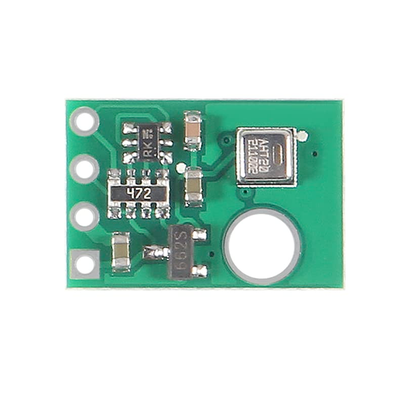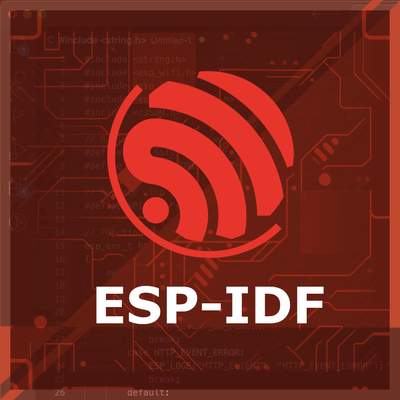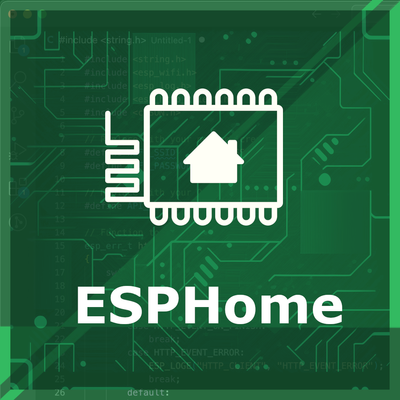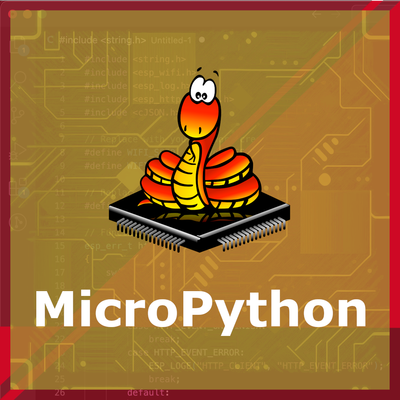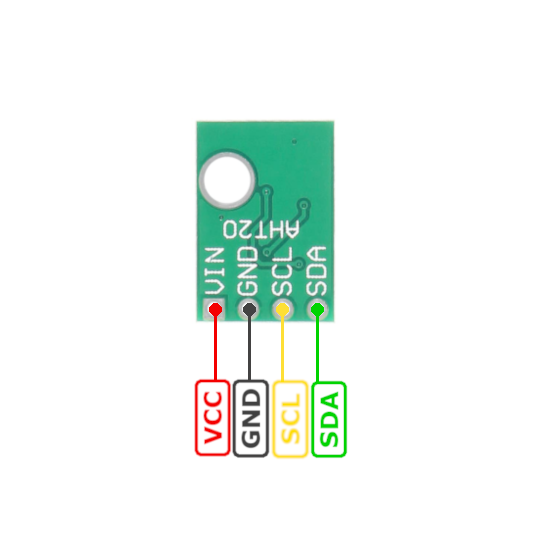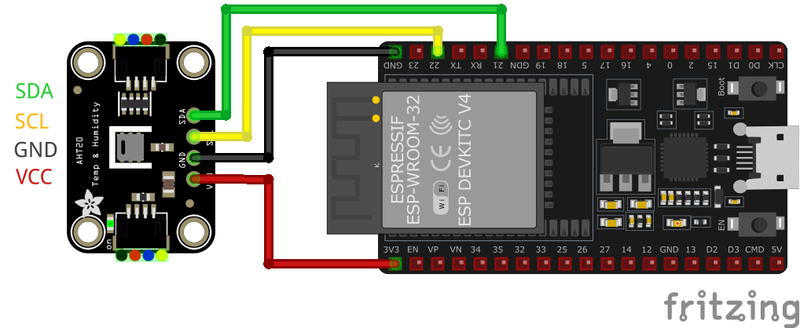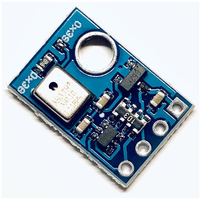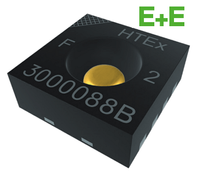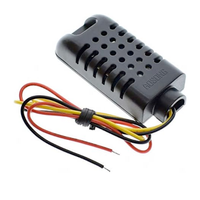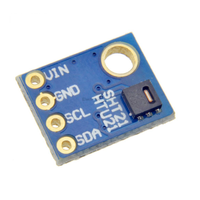ESP32 AHT20 Temperature and Humidity Sensor
The AHT20 datasheet provides comprehensive technical details about the AHT20 digital temperature and humidity sensor, a highly accurate and reliable component designed for industrial-grade applications. This document includes information on the sensor's specifications, electrical characteristics, communication protocols, and recommended usage guidelines, ensuring users can integrate it seamlessly into their projects.
🔗 Quick Links
🛒 AHT20 Price
ℹ️ About AHT20 Temperature and Humidity Sensor
The AHT series, developed by AOSONG (Aosong Electronics Co., Ltd.), consists of high-precision digital temperature and humidity sensors.
⚡ Key Features #
- Upgraded Performance – The AHT20 offers higher accuracy and improved reliability compared to the AHT10.
- Reliable Environmental Monitoring – Ideal for weather stations, indoor climate control, and industrial applications.
- Compact & Efficient – Digital output with I²C interface for seamless integration.
🔗 Learn more about the AHT20 sensor.
🔗 Check out the AHT10 sensor for a more affordable option.
⚙️ AHT20 Sensor Technical Specifications
Below you can see the AHT20 Temperature and Humidity Sensor Technical Specifications. The sensor is compatible with the ESP32, operating within a voltage range suitable for microcontrollers. For precise details about its features, specifications, and usage, refer to the sensor’s datasheet.
- Type: environment
- Protocol: I2C
- Interface: I2C
- Accuracy: ±2% RH, ±0.3 °C
- Operating Range: -40°C to 85°C, 0–100% RH
- Voltage: 2.0V to 5.5V (typical 3.3V)
🔌 AHT20 Sensor Pinout
Below you can see the pinout for the AHT20 Temperature and Humidity Sensor. The VCC pin is used to supply power to the sensor, and it typically requires 3.3V or 5V (refer to the datasheet for specific voltage requirements). The GND pin is the ground connection and must be connected to the ground of your ESP32!
The AHT20 pinout is simple and follows the I2C communication protocol:
- SDA (Data Line): Used for transferring data between the sensor and the microcontroller (ESP32).
- SCL (Clock Line): Provides the clock signal for synchronizing data transfer.
- GND (Ground): Connect to the ground of the ESP32 to complete the circuit.
- VCC (Power): Connect to the 3.3V or 5V power supply on the ESP32 to power the sensor.
🧵 AHT20 Wiring with ESP32
Below you can see the wiring for the AHT20 Temperature and Humidity Sensor with the ESP32. Connect the VCC pin of the sensor to the 3.3V pin on the ESP32 or external power supply for power and the GND pin of the sensor to the GND pin of the ESP32. Depending on the communication protocol of the sensor (e.g., I2C, SPI, UART, or analog), connect the appropriate data and clock or signal pins to compatible GPIO pins on the ESP32, as shown below in the wiring diagram.
SDA, SCL, VCC and GND pins to the ESP32. Make sure to configure the I2C pins accordingly.🛠️ AHT20 Temperature and Humidity Sensor Troubleshooting
This guide outlines a systematic approach to troubleshoot and resolve common problems with the . Start by confirming that the hardware connections are correct, as wiring mistakes are the most frequent cause of issues. If you are sure the connections are correct, follow the below steps to debug common issues.
⚠️ Sensor Initialization Failure on ESP32
Issue: When connecting the AHT20 sensor to an ESP32, the sensor fails to initialize, resulting in errors such as: AHT20 sensor initialization failed. error status : 2.
Possible causes include incorrect wiring, improper I2C configuration, or insufficient power supply.
Solution: Verify that the AHT20's SCL and SDA pins are correctly connected to the ESP32's I2C pins (commonly GPIO 21 for SDA and GPIO 22 for SCL). Ensure that the sensor is powered appropriately, either through the 3.3V or 5V pin, depending on the sensor's voltage requirements. Additionally, confirm that the I2C bus is properly initialized in the code with the correct pins and that no other devices on the bus share the same address. (forum.arduino.cc)
🔄 Communication Failure with ESPHome
Issue: When integrating the AHT20 sensor with ESPHome, the following error appears in the logs: [E][aht10:080]: Communication with AHT10 failed!, leading to the sensor not providing temperature and humidity data.
Possible causes include incorrect sensor variant specification or compatibility issues with the ESPHome version.
Solution: Ensure that the sensor variant is correctly specified in the ESPHome configuration. For the AHT20 sensor, the configuration should include variant: AHT20. Additionally, updating ESPHome to the latest version may resolve compatibility issues. If the problem persists, consider testing the sensor with a different microcontroller or using alternative libraries to rule out hardware-related issues. (github.com)
🌡️ Temperature Readings Increasing Over Time
Issue: The AHT20 sensor reports temperature readings that gradually increase over time, deviating from actual ambient conditions.
Possible causes include self-heating effects due to the sensor's proximity to heat-generating components or insufficient ventilation.
Solution: Position the sensor away from heat sources such as microcontrollers, voltage regulators, or other components that may emit heat. Implement proper ventilation around the sensor to allow for accurate ambient temperature measurements. Using longer connecting wires can help distance the sensor from potential heat sources. Additionally, consider placing the sensor in a well-ventilated enclosure to minimize the impact of external heat. (community.home-assistant.io)
🔍 Device Address Detected but Read Failed on ESP32
Issue: On a ESP32, the I2C bus detects the AHT20 sensor's address, but attempts to read data result in errors such as: Error: Read failed.
Possible causes include incorrect I2C bus configuration, insufficient pull-up resistors, or conflicts with other I2C devices.
Solution: Verify that the I2C interface is enabled on the ESP32 and that the correct I2C bus is being used. Ensure that appropriate pull-up resistors (typically 4.7kΩ) are present on the SDA and SCL lines. Check for address conflicts with other devices on the I2C bus and ensure that each device has a unique address.
💻 Code Examples
Below you can find code examples of AHT20 Temperature and Humidity Sensor with ESP32 in several frameworks:
If you encounter issues while using the AHT20 Temperature and Humidity Sensor, check the Common Issues Troubleshooting Guide.

ESP32 AHT20 Arduino IDE Code Example
Fill in your main Arduino IDE sketch file with the following code to use the AHT20 Temperature and Humidity Sensor:
#include <Wire.h>
#include <Adafruit_AHTX0.h> // Correct library for AHT20
// Create an instance of the AHT20 sensor
Adafruit_AHTX0 aht; // Use AHTX0 instead of AHT10
void setup() {
// Initialize Serial Monitor
Serial.begin(115200);
Serial.println("AHT20 Sensor Example");
// Initialize I2C communication
if (!aht.begin()) { // No parameter needed
Serial.println("Failed to find AHT20 sensor! Check wiring.");
while (1);
}
Serial.println("AHT20 sensor initialized.");
}
void loop() {
// Get sensor data
sensors_event_t humidity, temp;
aht.getEvent(&humidity, &temp); // Retrieve sensor readings
// Print temperature and humidity
Serial.print("Temperature: ");
Serial.print(temp.temperature);
Serial.println(" °C");
Serial.print("Humidity: ");
Serial.print(humidity.relative_humidity);
Serial.println(" %");
// Delay between readings
delay(2000);
}
This Arduino sketch interfaces with the AHT20 Temperature and Humidity Sensor using the Adafruit AHTX0 library over I2C.
Required Library #
To use this code, ensure you have installed the Adafruit AHTX0 library. You can install it via the Arduino Library Manager:
- Open Arduino IDE.
- Navigate to Sketch → Include Library → Manage Libraries.
- Search for 'Adafruit AHTX0' and install it.
Alternatively, you can download it from the official Adafruit GitHub repository:
🔗 Adafruit AHTX0 Library
Connect your ESP32 to your computer via a USB cable, Ensure the correct Board and Port are selected under Tools, Click the "Upload" button in the Arduino IDE to compile and upload the code to your ESP32.
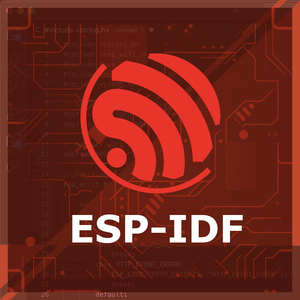
ESP32 AHT20 ESP-IDF Code ExampleExample in Espressif IoT Framework (ESP-IDF)
If you're using ESP-IDF to work with the AHT20 Temperature and Humidity Sensor, here's how you can set it up and read data from the sensor. Fill in this code in the main ESP-IDF file:
#include <stdio.h>
#include "freertos/FreeRTOS.h"
#include "freertos/task.h"
#include "driver/i2c.h"
#define I2C_MASTER_NUM I2C_NUM_0 // I2C port number
#define I2C_MASTER_SDA_IO 21 // GPIO for SDA
#define I2C_MASTER_SCL_IO 22 // GPIO for SCL
#define I2C_MASTER_FREQ_HZ 100000 // I2C clock frequency
#define AHT20_ADDR 0x38 // I2C address of the AHT20 sensor
#define AHT20_CMD_TRIGGER 0xAC // Command to trigger measurement
#define AHT20_CMD_SOFTRESET 0xBA // Command to reset the sensor
#define AHT20_CMD_INIT 0xBE // Command to initialize the sensor
// Function to initialize I2C
void i2c_master_init() {
i2c_config_t conf = {
.mode = I2C_MODE_MASTER,
.sda_io_num = I2C_MASTER_SDA_IO,
.scl_io_num = I2C_MASTER_SCL_IO,
.sda_pullup_en = GPIO_PULLUP_ENABLE,
.scl_pullup_en = GPIO_PULLUP_ENABLE,
.master.clk_speed = I2C_MASTER_FREQ_HZ,
};
i2c_param_config(I2C_MASTER_NUM, &conf);
i2c_driver_install(I2C_MASTER_NUM, conf.mode, 0, 0, 0);
}
// Function to write data to the AHT20
esp_err_t aht20_write_command(uint8_t cmd) {
i2c_cmd_handle_t handle = i2c_cmd_link_create();
i2c_master_start(handle);
i2c_master_write_byte(handle, (AHT20_ADDR << 1) | I2C_MASTER_WRITE, true);
i2c_master_write_byte(handle, cmd, true);
i2c_master_stop(handle);
esp_err_t ret = i2c_master_cmd_begin(I2C_MASTER_NUM, handle, pdMS_TO_TICKS(1000));
i2c_cmd_link_delete(handle);
return ret;
}
// Function to read data from the AHT20
esp_err_t aht20_read_data(uint8_t *data, size_t length) {
i2c_cmd_handle_t handle = i2c_cmd_link_create();
i2c_master_start(handle);
i2c_master_write_byte(handle, (AHT20_ADDR << 1) | I2C_MASTER_READ, true);
i2c_master_read(handle, data, length, I2C_MASTER_LAST_NACK);
i2c_master_stop(handle);
esp_err_t ret = i2c_master_cmd_begin(I2C_MASTER_NUM, handle, pdMS_TO_TICKS(1000));
i2c_cmd_link_delete(handle);
return ret;
}
// Function to reset and initialize the AHT20
void aht20_init() {
aht20_write_command(AHT20_CMD_SOFTRESET);
vTaskDelay(pdMS_TO_TICKS(20)); // Wait after reset
aht20_write_command(AHT20_CMD_INIT);
vTaskDelay(pdMS_TO_TICKS(20)); // Wait for initialization
}
// Function to get temperature and humidity
void aht20_get_temp_humidity(float *temperature, float *humidity) {
uint8_t data[6];
aht20_write_command(AHT20_CMD_TRIGGER);
vTaskDelay(pdMS_TO_TICKS(80)); // Wait for the measurement
if (aht20_read_data(data, 6) == ESP_OK) {
uint32_t raw_humidity = ((data[1] << 16) | (data[2] << 8) | data[3]) >> 4;
uint32_t raw_temperature = ((data[3] & 0x0F) << 16) | (data[4] << 8) | data[5];
*humidity = ((float)raw_humidity / 1048576.0) * 100.0;
*temperature = ((float)raw_temperature / 1048576.0) * 200.0 - 50.0;
} else {
*humidity = -1.0;
*temperature = -1.0;
}
}
// Main application
void app_main() {
float temperature = 0.0, humidity = 0.0;
i2c_master_init();
aht20_init();
while (1) {
aht20_get_temp_humidity(&temperature, &humidity);
printf("Temperature: %.2f °C, Humidity: %.2f %%", temperature, humidity);
vTaskDelay(pdMS_TO_TICKS(2000));
}
}The code initializes the I2C communication using i2c_master_init() and sets up the AHT20 sensor with aht20_init(). The aht20_write_command() function sends commands to the sensor for initialization and measurements, while aht20_read_data() reads the response, including raw temperature and humidity data. The aht20_get_temp_humidity() function processes the raw data to compute the actual temperature and humidity values. The main function app_main() initializes the sensor, enters a loop, and retrieves and displays the sensor data every 2 seconds using printf().
Update the I2C pins (I2C_MASTER_SDA_IO and I2C_MASTER_SCL_IO) to match your ESP32 hardware setup, Use idf.py build to compile the project, Use idf.py flash to upload the code to your ESP32.
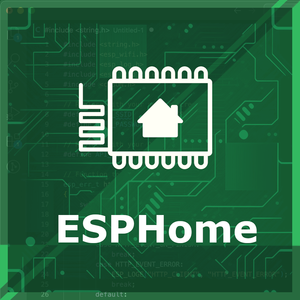
ESP32 AHT20 ESPHome Code Example
Fill in this configuration in your ESPHome YAML configuration file (example.yml) to integrate the AHT20 Temperature and Humidity Sensor
sensor:
- platform: aht10
variant: AHT20
temperature:
name: "Living Room Temperature"
humidity:
name: "Living Room Humidity"
update_interval: 60sThis code snippet configures an AHT20 temperature and humidity sensor in an ESPHome YAML file. The sensor block defines the platform as aht10, specifying that the device is compatible with the AHT10/AHT20 series of sensors. The variant field explicitly declares the sensor model as AHT20.
Two sensors are set up: temperature and humidity. Each sensor has a unique name for identification in the ESPHome dashboard or Home Assistant, such as Living Room Temperature and Living Room Humidity. These names are used when displaying or logging the sensor readings.
The update_interval is set to 60s, which means the sensor will provide updated temperature and humidity readings every 60 seconds.
Upload this code to your ESP32 using the ESPHome dashboard or the esphome run command.

ESP32 AHT20 PlatformIO Code Example
For PlatformIO, make sure to configure the platformio.ini file with the appropriate environment and libraries, and then proceed with the code.
Configure platformio.ini
First, your platformio.ini should look like below. You might need to include some libraries as shown. Make sure to change the board to your ESP32:
[env:esp32]
platform = espressif32
board = esp32dev
framework = arduino
monitor_speed = 115200
lib_deps =
adafruit/Adafruit AHTX0 @ ^2.0.0
arduino-libraries/WireESP32 AHT20 PlatformIO Example Code
Write this code in your PlatformIO project under the src/main.cpp file to use the AHT20 Temperature and Humidity Sensor:
#include <Wire.h>
#include "Adafruit_AHT10.h"
// Create an instance of the AHT20 sensor
Adafruit_AHT10 aht;
void setup() {
// Initialize Serial Monitor
Serial.begin(115200);
Serial.println("AHT20 Sensor Example");
// Initialize I2C communication and sensor
if (!aht.begin(Adafruit_AHT10::AHTX0_SENSOR)) { // Specify AHT20 variant
Serial.println("Failed to find AHT20 sensor! Check wiring.");
while (1); // Infinite loop if initialization fails
}
Serial.println("AHT20 sensor initialized.");
}
void loop() {
// Read temperature and humidity from the sensor
sensors_event_t humidity, temp;
aht.getEvent(&humidity, &temp); // Populate the event objects
// Print temperature and humidity to Serial Monitor
Serial.print("Temperature: ");
Serial.print(temp.temperature);
Serial.println(" °C");
Serial.print("Humidity: ");
Serial.print(humidity.relative_humidity);
Serial.println(" %");
// Delay between readings
delay(2000);
}The platformio.ini file configures the project for the ESP32 using the Arduino framework. The environment is set to [env:esp32], with platform = espressif32 for the ESP32 platform and board = esp32dev specifying a generic ESP32 development board. The framework is set to arduino, and the baud rate for the serial monitor is configured with monitor_speed = 115200.
Upload the code to your ESP32 using the PlatformIO "Upload" button in your IDE or the pio run --target upload command.
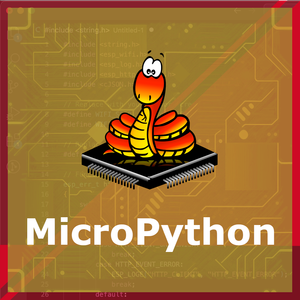
ESP32 AHT20 MicroPython Code Example
Fill in this script in your MicroPython main.py file (main.py) to integrate the AHT20 Temperature and Humidity Sensor with your ESP32.
import machine
import time
from ahtx0 import AHT20
# Initialize I2C
i2c = machine.I2C(0, scl=machine.Pin(22), sda=machine.Pin(21))
# Initialize AHT20 sensor
sensor = AHT20(i2c)
# Main loop
while True:
try:
# Read temperature and humidity
temperature = sensor.temperature
humidity = sensor.humidity
# Print readings
print("Temperature: {:.2f} °C".format(temperature))
print("Humidity: {:.2f} %".format(humidity))
# Wait for 2 seconds
time.sleep(2)
except Exception as e:
print("Error readingThe code initializes I2C communication using machine.I2C with GPIO22 for SCL and GPIO21 for SDA. The AHT20 sensor is initialized with the AHT20 class. In the main loop, the temperature and humidity are read using sensor.temperature and sensor.humidity, and the values are printed to the console using print(). A delay of 2 seconds is added between readings using time.sleep(2).
Upload this code to your ESP32 using a MicroPython-compatible IDE, such as Thonny, uPyCraft, or tools like ampy.
Conclusion
We went through technical specifications of AHT20 Temperature and Humidity Sensor, its pinout, connection with ESP32 and AHT20 Temperature and Humidity Sensor code examples with Arduino IDE, ESP-IDF, ESPHome and PlatformIO.

